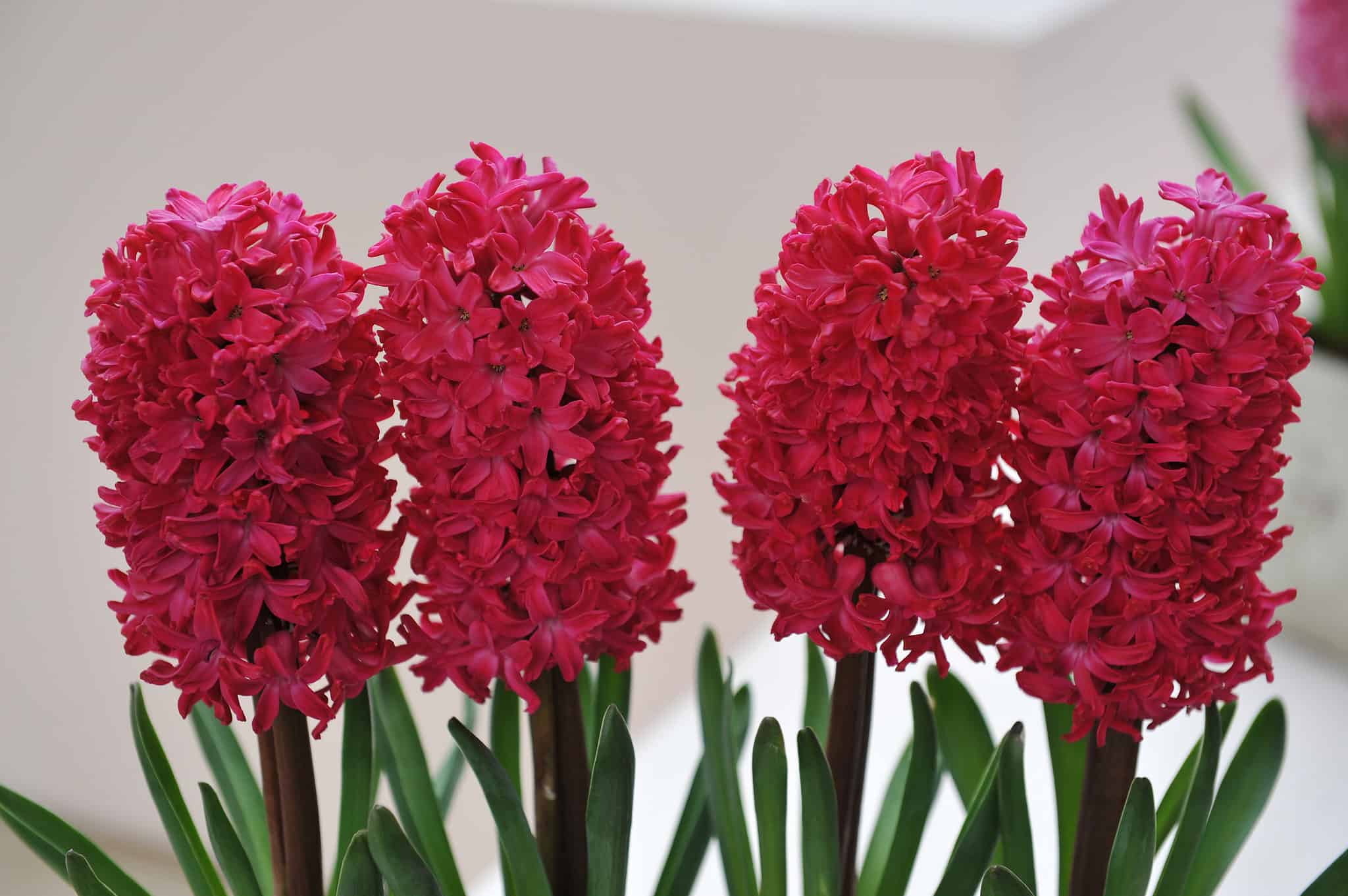When To Plant Hyacinth Bulbs For Beautiful Spring Blooms

Table of Contents
Spring's arrival is heralded by the fragrant, vibrant blooms of hyacinths. Their intensely colored spikes of flowers add a welcome splash of color to any garden after a long winter. But to enjoy these beautiful flowers, you need to know when to plant hyacinth bulbs. This guide provides a comprehensive overview of the optimal planting times, ensuring your hyacinths burst into bloom just when you want them.
Understanding Hyacinth Bulb Planting Seasons
Planting hyacinth bulbs at the right time is crucial for successful spring blooms. Because hyacinths need a period of cold stratification (a chilling period) to initiate flowering, planting in the fall is essential. This chilling period mimics the natural winter conditions they require. Without it, your bulbs may not bloom or produce weak, sparse flowers.
The specific planting time varies depending on your geographical location and the first expected frost date in your area. This is typically determined by your USDA hardiness zone.
- Northern climates (zones 3-6): Plant your hyacinth bulbs in September or October. Aim to plant several weeks before the ground freezes.
- Southern climates (zones 7-10): Plant slightly later, in October or November. The warmer temperatures mean you can plant closer to the first expected frost.
- Consider the first frost date: This is the most important factor. You want to give your bulbs enough time to establish roots before the ground freezes, typically 6-8 weeks.
Preparing the Soil for Hyacinth Bulbs
Hyacinth bulbs thrive in well-drained, loose soil. Poor drainage can lead to rot, preventing your bulbs from flowering. Before planting, amend your soil to ensure optimal conditions for healthy growth.
- Improve soil drainage: If your soil is heavy clay, add organic matter like compost or peat moss to improve drainage and aeration. This will allow water to drain easily, preventing waterlogging around the bulbs.
- Test soil pH: Hyacinths prefer slightly acidic to neutral soil (pH 6.0-7.0). A soil test kit can help determine your soil's pH. Adjust accordingly using lime to raise the pH or sulfur to lower it.
- Remove rocks and debris: Clear the planting area of any rocks, sticks, or other debris that could hinder root development.
Choosing the Right Hyacinth Bulbs
Selecting healthy hyacinth bulbs is key to abundant blooms. Look for firm, plump bulbs with no signs of damage, mold, or soft spots.
- Check for firmness: A firm bulb indicates good health. Avoid any soft or shriveled bulbs.
- Larger bulbs generally produce larger blooms: While smaller bulbs will still flower, larger bulbs tend to produce more impressive displays.
- Consider color preferences: Hyacinths come in a variety of colors, including blue, pink, white, purple, and yellow. Choose varieties that complement your garden's existing color scheme.
Planting Hyacinth Bulbs: A Step-by-Step Guide
Once you've prepared your soil and chosen your bulbs, planting is straightforward. Follow these steps for optimal results:
- Dig holes: Dig holes twice as deep as the height of the bulb.
- Space bulbs: Space bulbs 4-6 inches apart to allow for adequate growth.
- Plant pointy end up: Ensure the pointed end of the bulb faces upward.
- Water gently: After planting, water gently to settle the soil around the bulbs.
Post-Planting Care for Hyacinth Bulbs
Providing adequate care after planting is crucial for healthy growth and abundant blooms.
- Water regularly: Water regularly, especially during dry spells, keeping the soil consistently moist but not waterlogged.
- Apply mulch: Apply a layer of mulch (2-3 inches) around the planted bulbs to help insulate them, retain moisture, and suppress weeds. This is especially important in colder climates.
- Protect from extreme cold: In areas with extremely harsh winters, consider providing additional protection with a layer of evergreen boughs or other winter cover.
Conclusion: Enjoy Your Hyacinth Blooms!
Planting hyacinth bulbs at the right time is crucial for achieving beautiful spring blooms. By following the guidelines outlined above – from choosing the right planting time based on your hardiness zone, preparing the soil, selecting healthy bulbs, and providing appropriate post-planting care – you can ensure a vibrant display of color and fragrance in your garden. Remember to consider your specific climate and soil conditions for optimal results. Choosing healthy bulbs and providing adequate post-planting care will further enhance your success.
Call to Action: Start planning your spring garden today! Learn more about planting hyacinth bulbs and other spring-blooming flowers to create a stunning display. Get started with your hyacinth bulb planting now and enjoy the beauty of spring!

Featured Posts
-
 Pokemon Tcg Celestial Guardians A Disappointing Inclusion
May 29, 2025
Pokemon Tcg Celestial Guardians A Disappointing Inclusion
May 29, 2025 -
 Mstqbl Jwnathan Tah Me Brshlwnt Alqrar Alrsmy Alsadm
May 29, 2025
Mstqbl Jwnathan Tah Me Brshlwnt Alqrar Alrsmy Alsadm
May 29, 2025 -
 Ipa Egkrinei Polisi Elikopteron 1 4 Disekatommyrion Dolarion Sta Iae
May 29, 2025
Ipa Egkrinei Polisi Elikopteron 1 4 Disekatommyrion Dolarion Sta Iae
May 29, 2025 -
 Business Opportunities A Map Of The Countrys Emerging Hot Spots
May 29, 2025
Business Opportunities A Map Of The Countrys Emerging Hot Spots
May 29, 2025 -
 Woede Bij Clubicoon Ajax Krijgt Harde Kritiek
May 29, 2025
Woede Bij Clubicoon Ajax Krijgt Harde Kritiek
May 29, 2025
